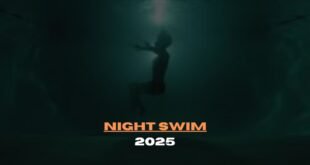Introduction
“The Wages of Fear” is a classic film that has left an indelible mark on the history of cinema. Directed by Henri-Georges Clouzot, this gripping thriller delves into the depths of human fear and courage, making it a timeless piece that continues to resonate with audiences today. In this article, we will explore the various elements that make “The Wages of Fear” a cinematic masterpiece, from its intense plot and complex characters to its innovative direction and lasting impact on popular culture.
Plot Summary of “The Wages of Fear”
“The Wages of Fear” is set in a small, desolate Latin American village where four desperate men are hired to transport a highly volatile cargo of nitroglycerin across treacherous terrain. The mission is fraught with danger, as the slightest jolt could trigger an explosion. The film meticulously builds tension as the men navigate through rough roads, narrow mountain paths, and other perilous obstacles.
The climax of the movie reaches a fever pitch as the men confront their deepest fears and struggle to survive. The journey is not just a physical one but also a psychological exploration of their endurance and resolve. The resolution of the story is both tragic and poignant, leaving a lasting impression on the audience.
Character Analysis
The characters in “The Wages of Fear” are deeply flawed and complex, each driven by their own motivations and fears.
Mario is the main protagonist, a drifter who sees the job as a way out of his stagnant life. His journey is marked by moments of bravery and vulnerability, making him a relatable and compelling character.
Jo is an older, experienced man whose facade of toughness hides a deep-seated fear and desperation. His relationship with Mario adds an emotional layer to the story, as they both grapple with their survival instincts.
Bimba and Luigi are the other two drivers, each with their own backstory and reasons for taking on the perilous task. Their interactions with Mario and Jo highlight the different ways people cope with fear and danger.
Themes Explored
“The Wages of Fear” delves into several profound themes:
- Fear and Courage: The film explores the thin line between fear and courage, showing how extreme circumstances can bring out both the best and worst in people.
- Human Nature and Survival: It portrays the primal instincts that drive human behavior when faced with life-threatening situations.
- Socioeconomic Themes: The desperation of the characters reflects broader social and economic issues, highlighting the lengths to which people will go to escape poverty.
Setting and Atmosphere
The film’s settings are meticulously crafted to enhance the narrative. The desolate village reflects the hopelessness and desperation of the characters, while the treacherous terrain they must navigate symbolizes the precariousness of their situation. The oppressive heat, the rugged landscape, and the constant threat of explosion create a palpable sense of tension that keeps the audience on edge.
Director’s Vision
Henri-Georges Clouzot’s direction is central to the film’s success. Known for his meticulous attention to detail and ability to build suspense, Clouzot draws on his influences from both European and American cinema to create a uniquely intense thriller. His use of real locations and practical effects adds a layer of authenticity to the film, immersing viewers in the characters’ perilous journey.
Cinematography and Visual Style
The cinematography in “The Wages of Fear” is masterful, utilizing a combination of tight close-ups and wide shots to convey the characters’ emotional states and the vastness of their challenge. The stark lighting and use of shadows emphasize the film’s themes of fear and danger. The visual style is both gritty and compelling, drawing viewers into the harsh reality of the characters’ world.
Sound and Music
The film’s soundtrack, composed by Georges Auric, plays a crucial role in building tension. The music is used sparingly, with silence and ambient sounds often heightening the sense of dread. When the score does come into play, it underscores key moments of suspense and emotion, enhancing the overall impact of the film.
Cultural References and Symbolism
“The Wages of Fear” is rich with symbolic elements and cultural references. The nitroglycerin cargo represents the constant threat of death, while the characters’ journey can be seen as an allegory for the human condition—fraught with danger, uncertainty, and the struggle for survival. The film also reflects post-war existentialist themes, questioning the meaning and value of life in the face of overwhelming odds.
Critical Reception
Upon its release, “The Wages of Fear” received critical acclaim for its intense storytelling, strong performances, and Clouzot’s direction. It won the Grand Prize at the Cannes Film Festival and the Golden Bear at the Berlin International Film Festival, cementing its place as a landmark in cinematic history. Audience feedback was equally positive, with many praising its gripping suspense and powerful themes.
Comparison with Other Films
“The Wages of Fear” stands alongside other classic thrillers like Alfred Hitchcock’s “Rear Window” and John Frankenheimer’s “The Manchurian Candidate” in its ability to create tension and explore complex human emotions. However, its focus on raw survival and the moral ambiguities faced by its characters sets it apart, influencing later films like William Friedkin’s “Sorcerer” (a remake of Clouzot’s film) and modern thrillers that emphasize psychological and physical challenges.
Behind the Scenes
The production of “The Wages of Fear” was fraught with challenges, from shooting in harsh environments to managing the practical effects required for the film’s explosive scenes. Clouzot’s demanding nature pushed the cast and crew to their limits, but their hard work paid off in a film that remains gripping and realistic. Anecdotes from the set reveal the intense dedication of the actors, who often performed their own stunts under difficult conditions.
Impact on Pop Culture
“The Wages of Fear” has had a lasting impact on popular culture, influencing a wide range of media from films to television shows. Its themes of danger and survival resonate in modern thrillers and action movies. The film’s suspenseful narrative and complex characters have inspired numerous filmmakers and continue to be studied in film schools around the world.
Merchandising and Marketing
While not initially accompanied by extensive merchandising, the enduring popularity of “The Wages of Fear” has led to various re-releases and special editions on DVD and Blu-ray. Film posters, critical essays, and memorabilia have kept the film in the public eye, contributing to its lasting legacy.
Future of the Franchise
“The Wages of Fear” has inspired remakes and adaptations, most notably William Friedkin’s “Sorcerer.” While there is no direct sequel, the film’s themes and narrative structure continue to influence contemporary cinema. Fans and scholars alike speculate on potential new adaptations that could bring the story to a new generation, while staying true to Clouzot’s original vision.
Conclusion
“The Wages of Fear” is a powerful and enduring film that masterfully blends suspense, drama, and profound human themes. Its exploration of fear, courage, and survival, combined with Clouzot’s visionary direction and the strong performances of its cast, make it a timeless classic. As we revisit this remarkable film, we are reminded of the intense emotions and thought-provoking questions it raises, solidifying its place in the pantheon of great cinema.



